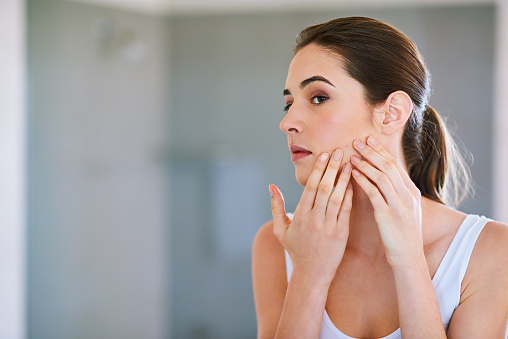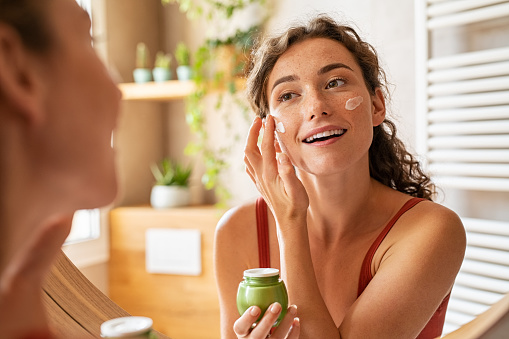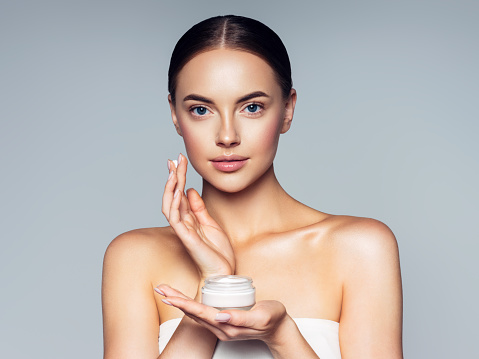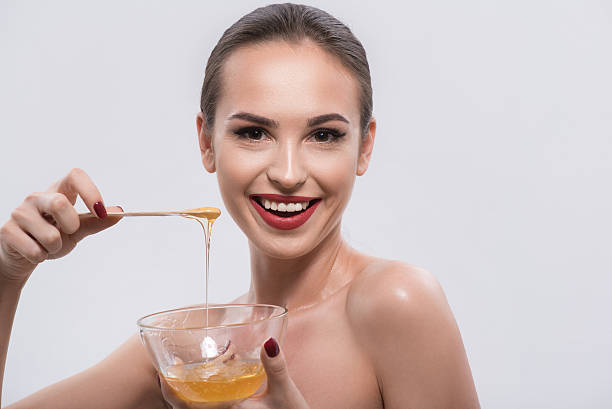This blog contains health articles, beauty tips, how to make money, and methods to build positive mental health, thereby making all women healthier, more beautiful and happier.
Saturday, August 6, 2022
Ways to Treat Hormonal Acne Naturally
Saturday, December 25, 2021
Here are How Retinoids Help with Aging
Does Retinol Permanently Reduce Wrinkles?
Retinol vs Retinoid
How does Retinol Work?
Retinol is an Anti-Aging Treatment
Monday, December 13, 2021
Home Treatment for Nodular Acne
How To Cure Nodular Acne
What is Nodular Acne?
Causes of Nodular Acne
Does Nodular Acne Cause Scarring?
Home Remedies for Nodular Acne
Monday, December 6, 2021
Tips to Get Rid of Back Acne Naturally
Can You Get Rid of Back Acne?
Back Acne Symptoms
What Causes Breakouts on Your Back?
Back Acne Treatment at Home
What is the best way to get rid of your back pimples? In some cases, you can get rid of your pimples by making some healthy lifestyle changes and using home remedies. Here are a few things you can do to get rid of your pimples:
Change Bath Soap Right Now
A super-gentle, coconut-scented shower gel may feel luxurious, but if it doesn't contain acne-fighting ingredients such as:
- BHA salicylic acid, which exfoliates the surface layer of your skin, and opens the pores for sebum and dead skin,
- AHA glycolic acid, which melts away the top layer of dead skin cells, to prevent freckles and blur red marks left by acne,
- and AHA lactic acid with the same skin-smoothing credentials as glycolic acid, only slightly gentler on the skin,
then it may not make your body acne less. So, no use.
Acids such as these prevent dead skin cells from building up and clogging pores. Remember to thoroughly clean your skin in the shower every day.
Tea Tree Oil
Tea tree oil is made from the leaves of the Australian tree plant. And it has been used by Australians for many years to treat various skin problems. Now, you can find a lot of lotions, cleansers, and creams that use this ingredient. There is some evidence recommending it to help treat acne by killing extra bacteria.
How to Prevent Back Acne Naturally
When to See the Dermatologist
It will take time to see results from acne treatment. If the treatment goes well, you may start seeing results in 6 to 8 weeks. For a complete cleanup, it can take 3 or 4 months.
If you don't see progress within 6 to 8 weeks, you may need a dermatologist's help. With the help of a dermatologist, back acne, or just about any type of acne can be treated.
Last words
Back acne often occurs. Since it's often caused by friction or sweat, showering after exercise is necessary to control back acne. Just be sure to avoid vigorous scrubbing. Instead, gently clean the area with a product specifically formulated for acne. Also, you might find OTC or prescription treatments helpful.
Wednesday, December 1, 2021
How-to Choose The Best Moisturizer for Dry Skin
Tips to Choose the Best Moisturizer for Dry Skin
How to Reduce Your Dry Skin
Which Proper Your Skin? Lotion, Cream, or Ointment?
3 Ingredients Your Moisturizer Should Have
How to Choose The Best Body Lotion for Dry Skin
Friday, November 26, 2021
How to Get Rid of Rosacea Skin
Best Skin Treatment for Rosacea
What is a Rosacea Definition?
Rosacea Symptoms
Rosacea Diagnosis
How to Overcome Rosacea
Tuesday, November 23, 2021
Ways to Recover Premature Aging Naturally
Powerful Way to Reduce Premature Aging of the Skin
What is Premature Aging Definition?
Premature Aging Causes
Why does premature aging happen? Several different aspects have a direct impact on how quickly these symptoms appear in your body.
Smoking
The toxins in cigarette smoke make your skin exposed to oxidative stress. This causes wrinkles, dryness, and other symptoms of premature aging.
Exposure to the sun and tanning of the skin.
Tanning beds and sun exposure penetrate the skin with UV rays. These rays damage DNA in skin cells, causing wrinkling.
Genes
Some very rare genetic conditions make you show signs of aging in childhood and early puberty. This condition is known as progeria.
Werner's syndrome affects one in one million people. This causes wrinkled skin, gray hair, and baldness to occur between the ages of 13 and 30.
Signs of Premature Aging Skin
Your skin is under the influence of many forces, including the sun, pollution, genetics, and bad habits, each of which contributes to the signs of aging of your skin. The most common signs of skin aging include wrinkles, loss of facial volume, and loss of facial elasticity.
Wrinkles
The first visible signs of aging are fine lines and wrinkles. Laughter lines or fine lines (small, shallow wrinkles) appear around your mouth, and in the outer corners of your eyes, followed by wrinkles on your forehead. Dynamic wrinkles, or wrinkles that appear only when you change your facial expression, become more prominent and form permanent wrinkles as you age.
As skin matures, its structure weakens daily, and your skin loses its firmness and elasticity as deeper wrinkles begin to form. Your skin can also become drier as you age, causing your face to lose that glow that's usually associated with a youthful appearance. Thinning of the skin is also often associated with visible aging, causing the skin to appear translucent and fragile.
Loss of Volume
Loss of volume and facial contour may be difficult to identify. The loss of facial volume mainly results in sagging skin, sunken or flat cheeks, deep nasolabial folds, and the appearance of a turkey neck (excess skin in the neck area). Your facial skin may appear slack due to the loss of elastin and collagen, and brittle, due to the flattening of the top layer of your skin.
How to Treat Premature Aging Naturally
Could you reverse premature aging? Your skin care focuses on removing dead skin cells to prevent skin dullness, including chemical peels. It breaks down the top layer of skin through specially formulated chemicals thereby speeding up the replacement of the new layer. Shortly after, the skin may feel burnt, but it will soon be worth the effort for smoother facial lines and an even skin tone.
Here are the best ways to get rid of premature aging signs naturally.
Work out regularly
Regular exercise and exercise sessions, even if they are only for a few minutes, are very beneficial for your body. Exercise not only helps you stay in perfect physical shape, but also strengthens the efficiency and functionality of your bones, and joints thus preventing premature osteoporosis dysfunction. Also, frequent exercise serves as a great therapy to increase and maintain your stamina, keep it young and athletic, and prepare your body to age in a healthy way.
Proteins are the building blocks of life, the most basic constituent of the living cells of the body. It is important to include protein in your diet regularly so that the body can easily replace the body's aging and dead cells, and produce new cells and tissues to keep you looking young and fit for a long time.
Eat a healthy and balanced diet.
Eat omega-3s.
Eating 2 cups of nuts each week helps keep your brain's telomeres in top shape, preventing clouded thinking and memory lapses, so often blamed in old age. The omega-3 fats and essential minerals in nuts reduce damaging inflammation in brain cells and blood vessels, explain Australian researchers. You're not a fan of peanuts? Eating 12 ounces of seafood every week also does the trick.
Environmental Aspects May Contribute To Aging
Living in a highly polluted environment and not taking care of the body can contribute to premature aging. Air pollution and toxic fumes have been shown to trigger the appearance of age spots, wrinkles, and other skin conditions, which can have an impact on how you look.
Saturday, November 13, 2021
Does Your Oily Skin Need Moisturizer?
Do You Need Moisturizer If You Have Oily Skin Type?
Why is it Necessary to Wear Moisturizer?
How to Use a Moisturizer for Oily Skin
Oily and acne-prone skin is difficult to control. However, home remedies can relieve signs and symptoms without the use of prescription drugs, or expensive skin care regimens. Below are some fast ways to hydrate oily skin the right way.
Milk
Milk contains lactic acid that has moisturizing properties. It can help maintain the skin's barrier function.
Take a quarter cup of fresh milk, and add some lemon juice to it. Mix all the ingredients until smooth and then apply to the skin of your face. Wash off with water after ten minutes. You can hydrate your skin once a week in this way.
Strawberry, when mixed with ingredients available at home, can be a facial moisturizer for those of you who have oily skin types. It revitalizes and nourishes your skin, and fights against excess oil. This fruit is rich in vitamin C. The fresh moisturizer is prepared with strawberry peel off your skin by removing extra oil. Honey's anti-inflammatory properties and soothing properties of curd cleanse and soothe the surface of your skin.
Non-Comedogenic Moisturizer for oily skin
Using a non-comedogenic moisturizer means that it doesn't clog pores or trigger acne. Products with large amounts of natural ingredients tend to be better, as they have smaller molecules, so they penetrate the skin better and are less likely to clog pores. To find out whether a product contains a non-comedogenic ingredient or not, the best way is to familiarize yourself with the ingredients, so that you know what they are.
Friday, October 15, 2021
Does Honey Really Make Your Skin Glow?
Benefits of Honey for Your Skin
What is Honey?
Advantages of Honey for Your Skin and Face
Moisturizes the skin deeply:
The reason why honey is often found as a basic ingredient, for almost every beauty product is because it deeply moisturizes pores and skin from within. The enzymes present in honey allow it to absorb easily into your skin and soften the skin from within.
To use honey as a moisturizing mask:
Use a spoonful of honey on clean and dry skin, and leave it on for 15-20 minutes. Rinse with cold water. It will serve as the best moisturizing mask.
Fight Acne and Pimples
Honey has antibacterial and anti-inflammatory properties, which help not only remove extra oil from the skin's surface but also clear out any blockages or clogged pores, which if not treated can cause steady breakage of acne and pimples on the skin.
How to use honey on acne:
Apply raw honey on pimple-prone areas. Leave it for 15-20 minutes and rinse it with tap water.
Fade Scars With Honey
Honey has natural antiseptic properties which assist in wound recovery and fading of scars. Therefore, honey is not only good for keeping your skin soft and moisturized, but it also makes sure to assist make scars seem much less prominent by causing them to lighten and slowly fade away. Honey can assist face scars faster because it first works on lowering inflammation and then helps to heal the skin quicker which in turn permits the scar to fade at the same time. Honey is suitable to fade acne scars and also to deal with burns and deep cuts.
Anti-inflammatory properties
Honey also has anti-inflammatory properties that can aid with skin conditions such as pimples or psoriasis. Learn more about using honey for acne or pimples here.
Honey Cleanses Pores And Removes Blackheads
Honey is highly effective in supporting getting rid of blackheads at home, and can also be used as a thorough pore cleansing agent, and it doesn’t disrupt the skin’s pH balance. As honey consists of antiseptic, antioxidant, and antibacterial properties, along with moisturizing properties, it helps to deeply penetrate the skin, soften the pores and skin layers and work to put off impurities from pores along with dirt that causes blackheads. The after-effects of honey on the skin are, that hydration and glow. Honey even makes pores and skin tight, and bouncy with a golden glow and clear complexion.
Gentle Exfoliant
Since raw honey crystalizes over time, the tiny granules act as mild exfoliants. They start to break down when they come into contact with water, and the warmth of your skin makes for a gentler scrub than that, of the harsher store-bought stuff. And since it is antibacterial, you can use it for your everyday face wash.
Try this: Warm the honey in your hands by first rubbing it between your fingers, then apply it in circular motions to your skin. Leave it on for a moment before massaging it off with a wet towel.








